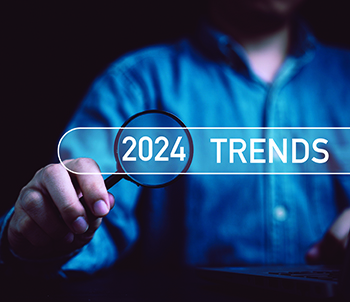As part of this growing demand, many states have enacted electrification programs to replace older gas-fired heating equipment with newer, highly-efficient heat pumps. There are several issues contractors face with this trend. Still, there are also many opportunities for dual-fuel heat pump systems, geothermal, variable refrigerant flow (VRF) technology, and even solar-powered HVAC systems.
Advances in these technologies make this equipment more viable in regions where they traditionally didn’t offer the same level of comfort as gas-fired high-efficiency furnaces.
By the way, did you know that more than 50% of HVAC customers are willing to pay more for these “eco-friendly” and energy-efficient products? It’s true, according to a blog post on the SBE website.
Consumer Expectations
However, consumers today also expect to work with HVAC contractors who are true professionals and who not only deliver the comfort and efficiencies they want but can prove it. Consumers also want immediate responses to their inquiries, quickly scheduled services, personalized communication, and convenience at every touch point.
The good news here is that as High-Performance HVAC professionals, you already meet or are in the process of meeting these requirements based on your training, technical expertise, and ability to solve root problems.

Speaking of eco-friendly – another legislative issue faced in both the residential and the commercial HVAC markets is the push toward newer refrigerants with much less global warming potential. This change is the result of the American Innovation and Manufacturing Act (AIM Act) of 2020, which authorizes the EPA to “address hydrofluorocarbons (HFCs) by providing new authorities in three main areas: to phase down the production and consumption of listed HFCs, manage these HFCs and their substitutes, and facilitate the transition to next-generation technologies through sector-based restrictions.”
We are talking about new non-HFC refrigerants that have slightly flammable properties. Known as A2L refrigerants, these refrigerants are already included in equipment being manufactured and installed in the U.S. today. There are changes regarding how technicians handle these refrigerants, what tools they need, and even how systems are charged.
This means contractors must focus on technical training for servicing and changing out older equipment for new A2L-based products.
Smart/Connected HVAC Trends
Smart thermostats and smart HVAC equipment are nothing new. However, with the huge popularity of home automation systems provided by Microsoft, Apple, Google, and others, consumers — especially Gen Zers — want to control their home environments in the same way they manage their lights, music, and more from apps on their smart phones.
Today, HVAC systems can connect to online networks and devices that allow contractors to monitor, maintain, and control equipment remotely. Often, this connectivity enables gathering real-time data on temperature, humidity, and other HVAC system metrics.
This technology is starting to lead to something called predictive maintenance, where Smart Systems gather data and analyze it to find operational anomalies and potential defects. This data analysis enables contractors to monitor and repair potential issues BEFORE they become problems! Imagine adding this to your service agreements.
Click Below for the Next Page:













Mike,
Great article! I think this is where we fall short because we are not actively letting our customers or perspective customers know the performance side of our HVAC business. We aren’t explaining what sets us apart from other contractors. We will be reaching out through e-blasts, social marketing, and showing our people how to better communicate with customers. If you have any other ideas please let us know.
Thanks for the wake-up call!!
Greg
Thanks for your kind words, Greg. I appreciate them.
Regarding promoting your High-Performance HVAC professionalism, it sounds like you are planning to do the right things when you start reaching out through Social Media, e-blasts, and so on. You may also want to consider promoting some of Dawn’s articles published here as well as the awards and other recognitions GVs has earned from NCI and any other organizations you belong to.